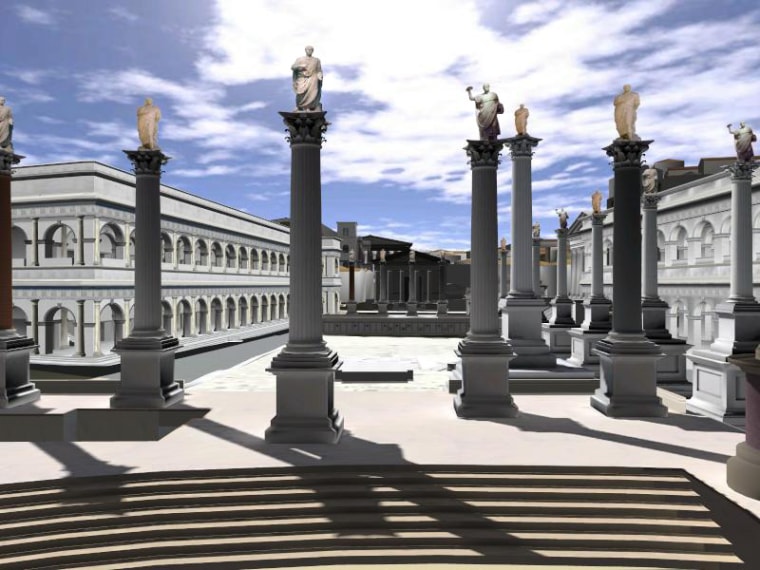Tourists puzzled by the jumble of buildings in classical and modern Rome can now find their bearings by visiting a virtual model of the imperial capital, in what is being billed as the world’s biggest computer simulation of an ancient city.
“Rome Reborn 1.0” was unveiled on Monday, showing nearly the entire city at its peak in A.D. 320, under the Emperor Constantine when it had grown to a million inhabitants.
The $2 million project is the brainchild of the University of Virginia’s Bernard Frischer, and has been more than 10 years in the making. Rome Reborn will eventually show the city's evolution from Bronze Age hut settlements to the Sack of Rome in the 5th century and the devastating Gothic Wars.
Reproduced for tourists on satellite-guided handsets and 3-D orientation movies in a theater due to be opened near the Colosseum next April, Frischer said his model “will prepare them for their visit to the Colosseum, the Forum, the imperial palaces on the Palatine, so that they can understand the ruins a lot better.”
“We can take people under the Colosseum and show them how the elevators worked to bring the animals up from underground chambers for the animal hunts they held,” he said, referring to the great Roman amphitheatre inaugurated by Titus in A.D. 80.
Rome's mayor, Walter Veltroni, praised the project's approach to ancient history. “It’s a very fascinating experience, re-created with all the necessary historical and philological care. In other words, it will allow us ... to be in the Roman Forum and understand the context we are in.”
Sections of the simulation are available on the Internet via the project's Web site.
Frischer’s model is sourced from ancient maps and building catalogs detailing “apartment buildings, private houses, inns, storage facilities, bakeries and even brothels,” plus digital images of the vast “Plastico di Roma Antica” model built from plaster of Paris in 1936-74, which measures 52 by 56 feet (16 by 17 meters).
The “reverse modeling” by Frischer and the Politecnico di Milano and University of Florence enables scholars to populate ancient monuments with virtual-reality figures for experiments on practical details like ventilation, capacity or acoustics.
“For example, in scholarly literature the Colosseum has a great reputation for being a great people mover where people could find their seats very quickly. But estimates of the carrying capacity vary wildly from 35,000 to 78,000,” he said.
Engineers have populated his model with virtual spectators to narrow down that estimate to 48,000 to 50,000 people.
The model can also show how the Romans, who worshipped the sun and moon, aligned their buildings with the summer solstice.
In a written statement inaugurating Rome Reborn 1.0, Frischer hinted that the virtual model might be extended to other ancient capitals as well. "This is just the first step in the creation of a virtual time machine, which our children and grandchildren will use to study the history of Rome and many other great cities around the world," he said.
This report includes information from Reuters, The Associated Press and MSNBC.com.
